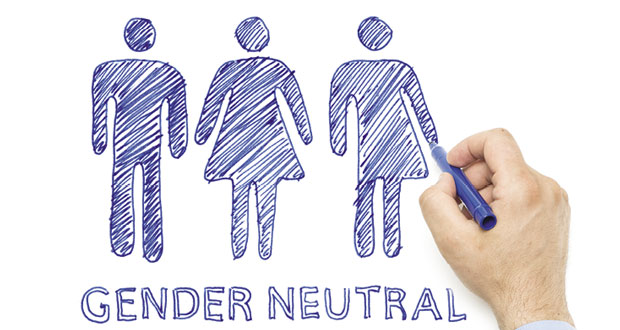Richard Braid, MD of Cistermiser looks at ways of balancing inclusivity and practicality when considering gender-neutral washrooms in workplaces and public areas
We live in a world that is becoming increasingly inclusive and more aware of the specific and unique needs of the individuals within our society. One of the topics that has been much discussed is that of gender-neutral toilets and the value that they have, particularly for those who identify as non-binary.
Members of the LGBTQ(IA)+ community often feel discriminated against through the lack of gender-neutral facilities available. According to the Stonewall LGBT in Britain report, Trans Report 2018, 48 per cent of Trans people say that they do not feel comfortable using public toilets due to fear of discrimination or harassment. This is why the provision of these non-gendered facilities are an important way of helping them feel included and acknowledged. It may seem like a small thing but being able to use a public washroom that doesn’t label based on gender is important for the mental and physical wellbeing of so many.
There will be, for the majority of us, no further thought when needing to use a public toilet beyond, “I hope it’s open” and “I hope there’s loo roll”. The process is simple: find a loo, use the loo, leave. Yet for many, that process can be much more complex and includes considerations that can have a substantial impact on an individual’s mental health, such as, “Can I use the bathroom without being misgendered?” When members of the LGBTQ(IA)+ community are already facing major discrimination in their daily lives, using the bathroom does not need to be a contributing factor.
Large public spaces, such as shopping malls and public transport hubs are prime examples of where gender-neutral washrooms are crucial. With so many people transiting through these spaces, having facilities that are inclusive is important, not only for members of the LGBTQ(IA)+ community, but for parents with children and those with physical needs beyond those of the able-bodied public. Changing spaces are often gender-neutral and larger than standard toilet cubicles. This offers those who need to use the space the room and privacy.
FINDING BALANCE
Within this environment, it is however important to acknowledge the importance of gendered toilets in these larger public spaces. Cistermiser submitted evidence as part of the Government’s 2020 public consultation on male and female public washrooms. The consultation raised many legitimate concerns about the effects this consultation could have on trans rights, but we feel that it is equally important to acknowledge that there are members of our society that do not feel safe or comfortable using shared facilities and it is important that, when out in public, they too feel they can use a washroom safely.
TIME CRUNCH
A study by Luc Bovens and Alexandro Marcoci in the Cambridge Behavioural Public Policy Journal revealed that ‘gender-neutral bathrooms reduce average waiting times’. The report found that evidence suggests that gender-neutral toilets appropriately fulfil this function and should be considered as part of any future policy.
Another consideration that must be made from converting gender specific washrooms into gender-neutral public washrooms is the differing amounts of time that men and woman need to be in the space. Woman only use cubicles whereas men are able to use urinals. In order for a washroom to be entirely gender neutral, urinals would need to be removed and that would instantly decrease the number of men who could use the facilities at any given time.
Public events, such as theatre shows and football matches, have a specific amount of time allocated for half time and intervals. When hundreds or thousands of people need to use the facilities all at once, having separate washrooms for men and woman is much more efficient. A standard 2,400mm wide urinal trough can cater up to 180 men in 15 minutes but if they were required to use a WC, those 15 minutes would only see 15 men using the facilities. If you just think for a moment how many guys there are at a Premier football game (we’re not excluding the ladies, it’s just that the type of facilities they use wouldn’t change), the 15-minute half time wouldn’t be nearly long for all of them to go to the bathroom.
SOLUTIONS
The question then needs to be asked of the councils and those providing washrooms on a commercial scale, “How are you going to provide facilities that are inclusive and sensitive to the needs of everyone in the community whilst being efficient and hygienic?” We believe it is possible through the strategic installation of touch-free solutions that can be installed in either gendered or gender-neutral washrooms.
In light of the necessary hygiene considerations post-COVID, men are able to use facilities with minimal touchpoints which in turn improves the overall hygiene of male washrooms. By installing infrared urinal sensors, contact points for men are cut from 11 to two. Hygiene, and specifically the slowing of COVID-19 spread, can be managed in public washrooms without having to resort to closing them completely, a solution we have sadly seen many councils resort to during the lockdown.
Cistermiser’s IRC® infrared urinal controls, the motion-activated Easyflush Wave for WCs and the hands-free deck-mounted basin tap are solutions that we’ve found that allow everyone to use public washrooms in a safe and hygienic way, and Cistermiser is looking forward to seeing these types of technologies increasing the level of inclusivity in public and commercial washrooms.





